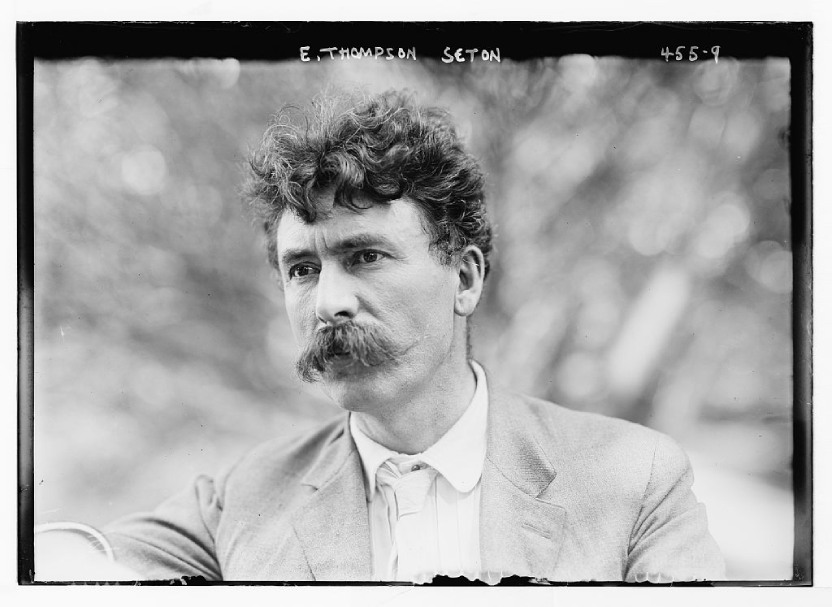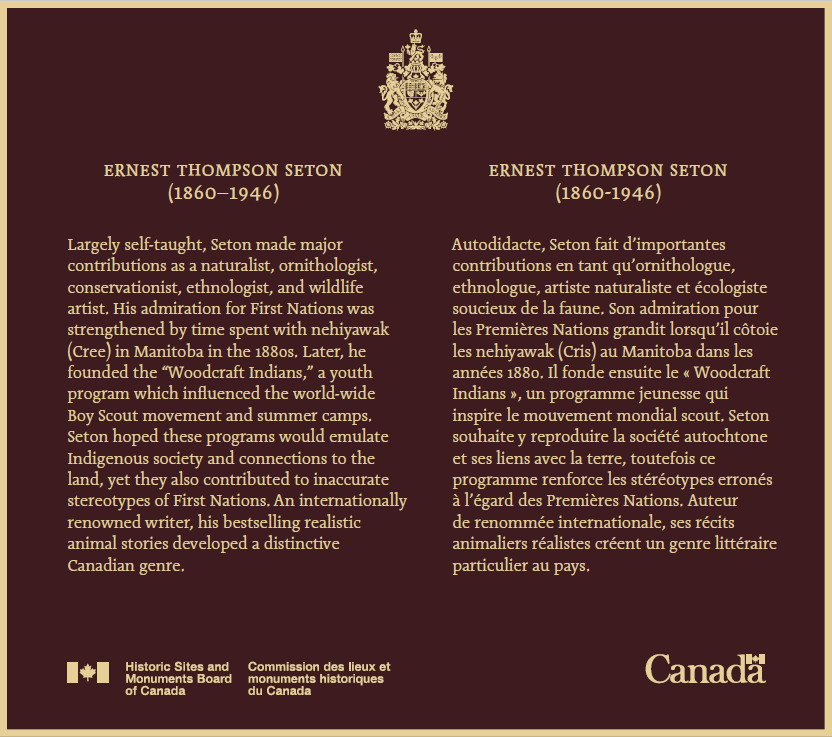Ernest Thompson Seton National Historic Person (1860-1946)
Ernest Thompson Seton was designated as a national historic person in 1995.
The Historic Sites and Monuments Board of Canada reviewed this designation in 2022.
Commemorative plaque: 116 Main Street, Carberry, ManitobaFootnote 1
Ernest Thompson Seton (1860-1946)
Largely self-taught, Seton made major contributions as a naturalist, ornithologist, conservationist, ethnologist and wildlife artist. His admiration for First Nations was strengthened by time spent with nehiyawak (Cree) in Manitoba in the 1880s. Later, he founded the “Woodcraft Indians,” a youth program which influenced the world-wide Boy Scout movement and summer camps. Seton hoped these programs would emulate Indigenous society and connections to the land, yet they also contributed to inaccurate stereotypes of First Nations. An internationally renowned writer, his bestselling realistic animal stories developed a distinctive Canadian genre.

© Library of Congress, Prints & Photographs Division, LC-DIG-ggbain-02076

Review of designation
Reviews are undertaken on an ongoing basis to ensure that designations reflect current scholarship, shifts in historical understandings, and a range of voices, perspectives and experiences in Canadian society.
In 2022, this designation was reviewed due to colonial assumptions, outdated terminology, and an absence of a layer of history in the commemorative plaque text. The English text, approved in 1997, included outdated terminology referring to “Native peoples” in reference to Indigenous peoples. The French and English texts also did not address the colonial aspects of Seton’s legacy as the founder of the “Woodcraft Indians”. This organization aimed to promote youth outdoor recreation but contributed to a legacy of stereotyping Indigenous peoples.
The English plaque text was modified to remove “Native peoples.” It now refers to First Nations, Indigenous society and culture, and specifically nehiyawak (Cree). Both French and English texts acknowledge that the "Woodcraft Indians” contributed to inaccurate stereotypes. A new plaque will be installed as time and resources permit.
Source: Historic Sites and Monuments Board of Canada, Minutes, May 2022.
The National Program of Historical Commemoration relies on the participation of Canadians in the identification of places, events and persons of national historic significance. Any member of the public can nominate a topic for consideration by the Historic Sites and Monuments Board of Canada.
- Date modified :